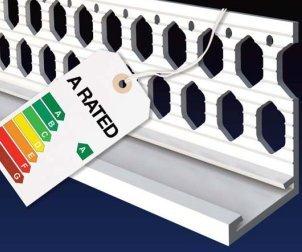

Contact us
Technical trade enquiries
T +44 (0)1299 888338
Richard Harley
Commercial Manager
CE Marking
CE marking for render beads
The EU Construction Products Directive (CPD) was replaced by the Construction Products Regulation (CPR) on 9th March 2011 and came into force on 1st July 2013. The CPR aims to break down technical barriers to trade within the European Economic Area.
Harmonised European Standards have been compiled to provide a common technical language and offer uniform assessment methods of the performance of construction products. The Construction Products Regulation (EU) No 305/2011 (CPR) lists the European Standards that contain performance data that is to be reached when carrying out testing. Manufacturers are then obliged to make their results available as a declaration of performance (DoP).
Declaration of performance
From 1st July 2013, under the CPR it is mandatory for manufacturers to draw up a Declaration of Performance and apply CE marking to any construction products covered by a harmonised European standard (hEN) or a European Technical Assessment (ETA).
The DoP gives the manufacturer the opportunity to deliver information about the essential characteristics of their products to the market. The manufacturer, by drawing up this DoP, assumes the responsibility for the conformity of the construction product with the declared performance.
A full list of titles of hEN’s can be found by following this link.
European standards
All of our internal and external render beads are compliant with “BS EN 13914-1:2016 – Design, preparation and application of external rendering and internal plastering” as shown in the Bibliography on page 5 of our BBA certificate. They are certified to last the lifetime of the render and at least 25 years and are fit for purpose as well as being compliant with the quality standards. This standard is explicit that PVCu and Stainless Steel are the only two materials that can be used for external render beads in all situations including high moisture and high salt, and care must be taken when using other materials such as galvanised steel and aluminium.
Within that standard, when it was published, it made reference to a draft standard for bead design, prEN 13658-2. Since that time, BS EN 13658-2:2005 was published on 19/04/2006. This standard only covers metal beads and metal lath and includes details for stainless steel, galvanised steel, and aluminium. No standard has been adopted for PVCu beads and this material was not included in BS EN 13658-2 as it was accepted that the physical performance of PVCu is sufficiently different from metal to require its own standard.
Setting the standard
Renderplas has set the standard since 1991 when we first obtained certification from the BBA that our products are fit for purpose. We were also the first to complete a full life cycle assessment (LCA) so that specifiers and users can fully understand the environmental credentials of our products.
At present, there is no hEN or ETA for PVCu beads for rendering, plastering or dry lining. In the absence of a European Assessment Document (EAD) detailing the testing requirements, Renderplas declare their performance against the design standard mentioned above and BBA testing.